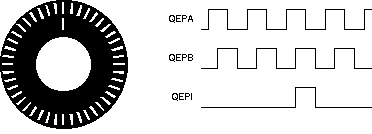SLYY211 October 2021 TMS320F2800132 , TMS320F2800133 , TMS320F2800135 , TMS320F2800137 , TMS320F2800152-Q1 , TMS320F2800153-Q1 , TMS320F2800154-Q1 , TMS320F2800155 , TMS320F2800155-Q1 , TMS320F2800156-Q1 , TMS320F2800157 , TMS320F2800157-Q1 , TMS320F280021 , TMS320F280021-Q1 , TMS320F280023 , TMS320F280023-Q1 , TMS320F280023C , TMS320F280025 , TMS320F280025-Q1 , TMS320F280025C , TMS320F280025C-Q1 , TMS320F280033 , TMS320F280034 , TMS320F280034-Q1 , TMS320F280036-Q1 , TMS320F280036C-Q1 , TMS320F280037 , TMS320F280037-Q1 , TMS320F280037C , TMS320F280037C-Q1 , TMS320F280038-Q1 , TMS320F280038C-Q1 , TMS320F280039 , TMS320F280039-Q1 , TMS320F280039C , TMS320F280039C-Q1 , TMS320F280040-Q1 , TMS320F280040C-Q1 , TMS320F280041 , TMS320F280041-Q1 , TMS320F280041C , TMS320F280041C-Q1 , TMS320F280045 , TMS320F280048-Q1 , TMS320F280048C-Q1 , TMS320F280049 , TMS320F280049-Q1 , TMS320F280049C , TMS320F280049C-Q1 , TMS320F28075 , TMS320F28075-Q1 , TMS320F28076 , TMS320F28374D , TMS320F28374S , TMS320F28375D , TMS320F28375S , TMS320F28375S-Q1 , TMS320F28376D , TMS320F28376S , TMS320F28377D , TMS320F28377D-EP , TMS320F28377D-Q1 , TMS320F28377S , TMS320F28377S-Q1 , TMS320F28378D , TMS320F28378S , TMS320F28379D , TMS320F28379D-Q1 , TMS320F28379S
- 1 Message from the editors
- 2 System Design
- 3 Controllers
- 4 ADC
- 5 Comparator
- 6 Processing
- 7 Encoders
- 8 Pulse width modulation (PWM)
- 9 DAC
- 10Mathematical models
- 11Important Notice
7.4.2 Incremental encoders
Incremental encoders generate a pulse train output signal each time the shaft rotates. The number of pulses per revolution defines the resolution of the device, the number of pulses indicates the change in angle, the frequency of pulses is proportional to the rate of position change, and the phase indicates the direction of movement. Each time the encoder is powered on it begins counting from zero, regardless of where the shaft is. Initial homing to a reference point, often called an index or Z signal, is therefore inevitable in all positioning tasks, both upon start up of the control system and whenever power to the encoder has been interrupted.
- QEPA, QEPB, QEPI (Index), and inverted Signals are output of the Incremental Encoders
- Flexible Scaling Functionality
Figure 7-1 is an example of a quadrature signal moving in the forward direction (QEPA leads QEPB).
 Figure 7-1 Quadrature signal.
Figure 7-1 Quadrature signal.